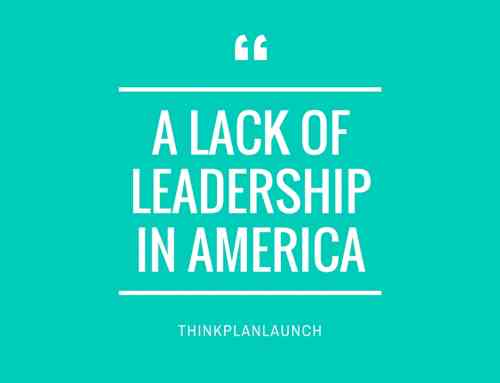Table of Contents
Employee Ownership Culture Development
Developing an employee ownership culture has many benefits and advantages. It increases productivity, innovation, and leadership in the workforce. This kind of culture can thrive in the corporate world and in the small business world. By empowering employees with a means of achieving ownership, your organization can rapidly change from an uninspiring place to be to a place where anything can happen.
An employee ownership culture allows executives to rely on not only other managers, but employees at all levels. This is especially true where the line of work that many of the employees engage in aren’t directly monitored by managers. By empowering employees, a company can move quickly and not tangle itself with rules of engagement.
The applications of employee ownership is far and wide. In customer service it allows employees to provide the best service. In social media marketing it gives gravitas to the voice of the company. In the production line it encourages details to be paid attention to ensuring high quality.
An employee ownership culture boosts productivity
Managers are busy people. They create plans and execute them. A lot of managers spend a significant amount of time delegating work and tasks. While this is part of the job description, delegating tasks can be time consuming. If communication mistakes are being made, many of the employees in a company might not have an idea what the big picture is. This means that employees are kept in the dark and can’t anticipate what their next tasks will be. Nor are they able to judge the level of priority or importance of any given task. This disables them. This strips them from owning their work.
Communication helps transfer ownership.
The first part of creating an employee ownership culture is to empower employees with knowledge. The big picture, strategy, and plan. The key deliverables, goals, risks and opportunities should be presented so that everyone is on the same page. This is an essential part of effective leadership. Before an employee can assume ownership, they must know the fundamentals of their own organization. Namely, the “why.” Why are they doing specific tasks. What does it do and what are the measures of success. How does it relate to the vision of the organization?
These pieces of information helps them connect the dots so that they can later determine if their tasks are contributing towards the goals of the organization. When a manager withholds this information, employees have no clue how to judge what is in line with the big picture.
Once information is spread from manager to employee, the process of empowering people with ownership can begin. Responsibility, instead of tasks, can be delegated. Information becomes power.
For employee ownership to boost productivity, managers must assign responsibilities over certain areas. The scope can range from wide to narrow. The employee must understand what outcomes are desirable, how to prioritize, how to allocate and obtain resources, and how to overcome obstacles. The manager must remain available as an obstacle remover. Like any good agile team, there must be a person who can source solutions out of an organization’s workforce so that individuals can accomplish their tasks.
The best manager is not only a good listener, but an active listener. They also ask questions and try to extract whatever it is that is blocking progress. This helps create trust and improves the flow of communication.
Employee empowerment doesn’t come overnight. It is a project of its own. It takes time and commitment. Also, it takes strategy. Communication and behavior is a key driver of motivating an employee to take ownership. Tracking progress is also an essential not to overlook.
Futhermore, to increase workforce productivity, each employee must have a sense of importance. This ties into leadership development which will be covered below.
Innovation comes from ownership
Innovation can lead to wild success for an organization. Hoping for innovation when employees are being micro-managed is a lost cause. The only way for innovation to foster is when employees are able to take ownership and responsibility. This allows them to be independent and takes risks.
Risk taking might sound very scary for a manager. However, if an employee is given resources and boundaries, they will have many opportunities to innovate. Also, communication must be solid. Information silos cannot exist in an innovative organization. Creating an employee ownership culture will make it rewarding for employees to find new ways to to do things. They will also find better solutions to existing problems. They might even stumble on something that might lead an organization to new heights.
Employees who do not have ownership have no motivation to change the status quo. Imagine this analogy. You give an employee a vehicle. He is told how to drive it, report on its operation and what not to do with it. Essentially, a list of no-nos. And any prohibited activity that isn’t mentioned doesn’t mean a green light. Basically, the employee can’t really do anything except drive it the way the manager wants it driven. Nothing changes. Nothing improves. Now think of a teenager given a car for the first time. Other than a few essential safety rules and parental necessities, the teenager is set free to do whatever. What does the enthusiastic teenager do? He sets about trying to improve the car. Maintain it. Decorate it. Show it off. After all, its in his ownership right? They way you would treat your employer’s car and your own car is far different from each other. Rules or not.
One important note for encouraging innovation is that credit should be due to where it is deserved. Innovation must be rewarded. This is what makes ownership desirable for the employee. Without it, there is no benefit for the employee.
Leadership is developed from ownership
The second that a person takes ownership over something accountability becomes present. Accountability is an important step of leadership. In fact, leadership in general, is taking ownership over the actions of oneself and others under direction.
Employees should be given a chance to lead whether it be over something small or something more substantial. Managers shouldn’t be afraid to empower their employees to take leadership. This is a huge advantage for managers when they can trust someone else to take ownership over an area. Managers must put aside the thought that they will be outshone by their employees. In fact, managers who lead a successful team will also benefit from the results of multiple leaders under their wings. The only managers who succumb to their employees outshining them are manages who aren’t leaders and fall from grace to to reasons besides other employees.
Creating an employee ownership culture is the best way to create leadership within an organization. This is especially important for growing organizations. Finding leaders externally might always be an option, however, there is something to be had from a leader developed within. Job turnover and job satisfaction are some of the key performance metrics of human resources. Leadership coaching is an effective way to improve turnover and satisfaction by giving the workforce opportunities to grow individually alongside the organization.
Before we close our discussion, we should bring up accountability again since it is so important. Holding an employee accountable for their behaviors, performance, and attitudes can only be acceptable if a manager gives them ownership over something. If ownership is denied, the only person responsible for failure is the manger themselves.
This is not to blame a manager who struggles to delegate responsibilities. This is to warn that manager. The added burden and stress of taking responsibility over every minute detail is not only debilitating, it is unproductive. Any manager who wants to improve their teams performance must be able to let go of the reigns and assign responsibilities instead of tasks. Building trust means building respect, not only for the manager but for the organization and its work.




Leave A Comment